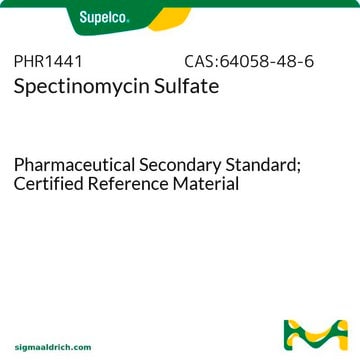T1952
Trichostatin A, Ready Made Solution
5 mM in DMSO, from Streptomyces sp.
Synonym(s):
TSA, [R-(E,E)]-7-[4-(Dimethylamino)phenyl]-N-hydroxy-4,6-dimethyl-7-oxo-2,4-heptadienamide
About This Item
Recommended Products
biological source
Streptomyces sp.
Quality Level
Assay
≥98% (HPLC)
form
DMSO solution
concentration
5 mM in DMSO
technique(s)
cell culture | mammalian: suitable
antibiotic activity spectrum
fungi
neoplastics
Mode of action
enzyme | inhibits
shipped in
dry ice
storage temp.
−20°C
InChI
1S/C17H22N2O3/c1-12(5-10-16(20)18-22)11-13(2)17(21)14-6-8-15(9-7-14)19(3)4/h5-11,13,22H,1-4H3,(H,18,20)/b10-5+,12-11+
InChI key
RTKIYFITIVXBLE-WKWSCTOISA-N
General description
Application
- as a histone deacetylase inhibitor to study its effect on transcriptome changes by stem cell testing
- to inhibit histone deacetylase (HDAC) class I, II, or III in primary pituitary cell cultures and to investigate insulin control of endogenous human growth hormone gene (hGH)
- to treat cells for the HDAC inhibition experiments
Biochem/physiol Actions
related product
Storage Class Code
10 - Combustible liquids
WGK
WGK 1
Flash Point(F)
Not applicable
Flash Point(C)
Not applicable
Personal Protective Equipment
Certificates of Analysis (COA)
Search for Certificates of Analysis (COA) by entering the products Lot/Batch Number. Lot and Batch Numbers can be found on a product’s label following the words ‘Lot’ or ‘Batch’.
Already Own This Product?
Find documentation for the products that you have recently purchased in the Document Library.
Customers Also Viewed
Our team of scientists has experience in all areas of research including Life Science, Material Science, Chemical Synthesis, Chromatography, Analytical and many others.
Contact Technical Service







